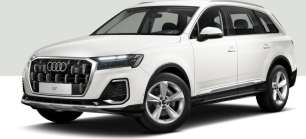Make no mistake, the GLE63 S is a big beast, but it certainly doesn’t act its size.
Firstly, the GLE63 S’s engine is an absolute monster, helping it to hunker down off the line and then charge on towards the horizon with serious vigour.
While there’s so much initial torque to begin with, you still get the added benefit of the ISG, which helps to eliminate lag as the new twin-scroll turbos spool up.
That said, acceleration isn’t always brutal, as the electronic stability control (ESC) is often quick to cut power when under full throttle in first gear. Thankfully, engaging the ESC system’s Sport mode solves this issue.
This behaviour is somewhat ironic as the 4Matic+ system is seemingly never short of grip, with it's working hard to find the axle with the most traction, while torque vectoring and a rear limited-slip differential proportion torque from wheel to wheel.
Regardless, the transmission provides predictably smooth and predominantly timely gear changes, although they’re definitely not dual-clutch quick.
What’s more memorable, though, is the sports exhaust system, which keeps your neighbours relatively sane in the Comfort and Sport drive modes, but will drive them mad in Sport+, with hilarious crackles and pops heard loud and clear on the overrun.
It’s worth noting that while the sports exhaust system can be manually engaged in the Comfort and Sport drive modes via a switch on the centre console, it only makes the V8 rumble grow stronger, with the full effect only unlocked in Sport+.
Of course, there’s more to the GLE63 S experience, like the fact that it somehow rides like a large SUV yet handles like a sports car.
The suspension’s air springs and adaptive dampers offer up a luxurious ride in the Comfort drive mode, with the GLE63 S wafting along with confidence. Not even its large-diameter alloy wheels pose too much of a threat to this quality on poorer country roads.
The ride is still more than liveable in the Sport drive mode, although the adaptive dampers become a too firm in Sport+, with the ride becoming a little too jittery to be bearable.
Of course, the whole point of the adaptive dampers becoming progressively firmer is to help the GLE63 S handle even better, but the real revelations here are the active anti-roll bars and engine mounts, which effectively limit body roll to such a level that it’s almost imperceptible.
In fact, overall body control is impressive, with the GLE63 S not feeling like the 2.5-tonne-plus behemoth it is. It really has no right to attack corners the way it does, with the coupe feeling a touch tighter than the wagon, thanks to its 60mm-shorter wheelbase.
Further confidence is afforded by the sports brakes, which include 400mm discs with six-piston calipers up front. Yep, they wash away speed with ease, which is exactly what you’d hope for.
Also key to the handling is the electric power steering, which is speed-sensitive and has a variable ratio. It’s really quick in the wagon, and even more so in the coupe, thanks to its more direct tune.
Either way, this set-up is well-weighted in the Comfort drive mode, with plenty of feel and just the right amount of heft. That said, Sport and Sport+ make it gradually heavier, but neither make the driving experience better, so stick with the default setting.
Meanwhile, Noise, Vibration and Harshness (NVH) levels are pretty good, although tyre roar is consistent at highway speeds, while wind whistle is prominent over the side mirrors when travelling above 110km/h.

































